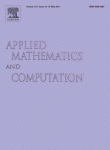 Last week, we reported that a group of Harvard researchers had retracted a paper in Blood for “multiple instances of duplicate (redundant) publication of data, text, and images that are nonessential to the paper.” The retraction notice referred to a paper in the Journal of Biological Chemistry (JBC):
Last week, we reported that a group of Harvard researchers had retracted a paper in Blood for “multiple instances of duplicate (redundant) publication of data, text, and images that are nonessential to the paper.” The retraction notice referred to a paper in the Journal of Biological Chemistry (JBC):
The redundancies are between the above-cited Blood article and the following 12 November 2010 article, published in the Journal of Biological Chemistry (JBC): Jiang S, Zagozdzon R, Jorda MA, et al. Endocannabinoids are expressed in bone marrow stromal niches and play a role in interactions of hematopoietic stem and progenitor cells with the bone marrow microenvironment. J Biol Chem. 2010;285(46):35471-35478.
Today, we learned that the JBC paper has also been retracted. The notice, as we’ve come to expect from the JBC, is unhelpful: Continue reading Second retraction by Harvard group studying cannabinoids, this one in JBC







